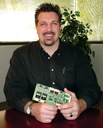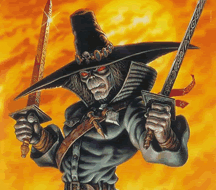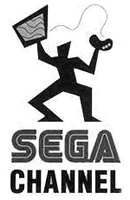Sega-16 loves talking to people within the industry, especially those who made some of our favorite games. We never pass up a chance to talk with those who had a hand in bringing us some great memories, and this time is no exception. We recently got the chance to chat with former Sega programmer and designer David Foley, someone who knew the innards of the company’s development world quite well. As a designer and programmer for Spider-Man vs. the Kingpin, Foley helped bring Marvel’s wall crawler to life on the Genesis, and his development studio, HyperWare, scored a massive hit with Urban Strike, which sold 750,000 copies in its first six months.
 After leaving Sega, Foley started UltraCade Technologies, a company that provided hardware components to arcade cabinet makers nationwide, as well as selling its popular Arcade Legends cabinet, a multi-game cab perfect for any game room that came packaged with over ninety classic games. He sold the company to Global VR in 2006.
After leaving Sega, Foley started UltraCade Technologies, a company that provided hardware components to arcade cabinet makers nationwide, as well as selling its popular Arcade Legends cabinet, a multi-game cab perfect for any game room that came packaged with over ninety classic games. He sold the company to Global VR in 2006.
Nowadays, Foley divides his time between his family and his two companies: HyperWare, which creates arcade software platforms, and his music company NexTune. Always interested in the video games, he was happy to sit for a spell and talk about his time at Sega.
Sega-16: At the time of its release, Spider-Man vs. the Kingpin was considered one of the best video game renditions of Marvel’s flagship character, as it was extremely playable but also faithful to the comic books. How hard was it to strike such a delicate balance? Most attempts are dismal failures, yet Spidey really shone on the Genesis.
David Foley: We were immersed in Spider-Man everything during the project. We had every kind of poster, doll, figure etc around us. The key for the game was twofold, artwork and fluidity of the character. The guys that did the engine did a great job getting the system in place where the character movement was very smooth. Given the limitations on the CPU, we ended up using tables instead of true physics calculations for things like the arc of the swing. Another innovation was the level and sprite tools that started to form during the project. We did everything on the MAC, with sprite/animation tools that let us preview the animations on the MAC, and then we could do builds right from MPW and download to the Genesis. The level tools also allowed for creation and editing of not only the level artwork, but also the enemy placement and parameters, letting us play with the level designs in a short time cycle. We also had great artists making the images look very true to the property.
Sega-16: Why was the camera feature removed from the Sega CD version of Spider-Man? So many cool features were added, and the game was decidedly less linear, but it seems odd that one of the more memorable features of the cartridge version was eliminated.
David Foley: I’m pretty sure there were some resource issues, and Spidey CD was rushed to market, with almost no time to actually develop it like a proper title. It was a quick “get it done now” project as Sega needed content for the Sega CD.
Sega-16: Taz-Mania was another licensed hit for Sega. What was your initial reaction when brought aboard the project? Did it ever seem like it would be difficult to turn the classic Looney Toons character into a viable game hero? Bugs Bunny or even Daffy Duck seem like more natural choices for the role.
David Foley: I was very excited about Taz. We knew that we had a lot to live up too with that license. We all worked in the same room, and the room was filled with Taz merchandise. Taz was so well defined that we didn’t have to guess how to make him fun, we just had to convey that in the limitations of the hardware. Taz has attitude, and is a brute. That means you can get away with a lot of character traits that don’t have to be so subtle. The toughest part of Taz was coming up with a way to have over two hundred frames of animation and still fit in a cart. This led to a layered sprite tool where we could use the same arm in several frames, the same head, etc etc, and just move them within the tool to get the animation. This saved a ton of space on the cart, and allowed for eight and twelve frame animations, giving the character a lot of fluidity. The other trick we did was to build different levels with the same artwork, and just use different palettes. You’ll notice the ice level and the sand level use the same tiles.
 Sega-16: What did you think of the way Chakan turned out? Many gamers remember the game specifically for its brutal difficulty. Were you guys trying to make it so hard, or was it one of those things that just turned out that way?
Sega-16: What did you think of the way Chakan turned out? Many gamers remember the game specifically for its brutal difficulty. Were you guys trying to make it so hard, or was it one of those things that just turned out that way?
David Foley: Ed Annunziata had a vision of how he wanted Chakan to be. Difficulty was desired for the character, as was the amount of puzzles in the level designs. The game was meant to break from the tradition of just mashing through levels and requiring the player to think more.
Sega-16: Word has it that the Super Strike Trilogy for the Sega CD was completed but never released. Is this true?
David Foley: It is. I think I have a copy somewhere in storage.
Sega-16: Was the collection to have any new features, like extra levels, weapons, or vehicles?
David Foley: All of the missing levels, several vehicles. I think we had tossed out over 30% of the levels to make the cartridge fit and on time.
Sega-16: Savage Heroes designer Scott Berfield told us that one of the reasons why the game was cancelled was because the prototype wasn’t very good, which killed its internal momentum at Sega. What can you tell us about the game’s demise?
David Foley: It required a lot of graphics to make the game look good, and the color limitations of the machine meant a lot of post production work was needed. We also had never built a fighting engine before, and our standard 2D side scrolling engine needed a decent overhaul to handle the fighting unique properties. It never really got off the ground.
Sega-16: Berfield also mentioned that the game was simply too ambitious for the Genesis. Do you think the 32X could have done it justice?
David Foley: Well, it was really about VRAM and the ability to load many frames to make it look smooth. The Genesis just couldn’t handle that many large unique sprites.
Sega-16: You implemented the browser for the Sega Channel. Considering the limitations of the technology at the time, how well/bad do you think the service did?
David Foley: The service was awesome. It was way ahead of its time. Look today at DirectTV game channels, it’s almost the same service 12 years later. They simply didn’t have enough penetration into cable systems to make players aware of it.
Sega-16: The Sega Channel offered some of the services gamers today are enjoying via Xbox Live and the Playstation Network. What were some of the major hurdles you had to overcome to bring the service to gamers?
 David Foley: Well, first technically the machine is super low res, so a real web browser couldn’t happen, and changing web artwork to Sega palettes on the fly didn’t really work too well, so web content had to be manipulated to look decent. The service was actually pretty good, although download times were not so good. The biggest problem was that they didn’t get any cable systems to pick them up, so they never got the momentum they needed.
David Foley: Well, first technically the machine is super low res, so a real web browser couldn’t happen, and changing web artwork to Sega palettes on the fly didn’t really work too well, so web content had to be manipulated to look decent. The service was actually pretty good, although download times were not so good. The biggest problem was that they didn’t get any cable systems to pick them up, so they never got the momentum they needed.
Sega-16: If Sega hadn’t found itself in the precarious financial position it was in 1995, do you think the Sega Channel could have worked with the Saturn?
David Foley: Absolutely. It would have been what XBLA is today.
Sega-16: I could see it offering demos, downloadable content, etc, maybe even small games like Xbox Live Arcade or the Virtual Console. Do you think it would have been able to survive the hardware transition?
David Foley: Sure, most of the technology was platform independent.
Our thanks to Mr. Foley for sharing his great Genesis memories!

Recent Comments